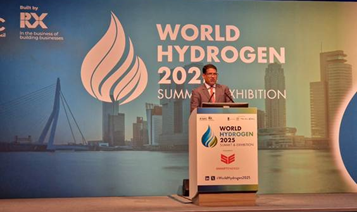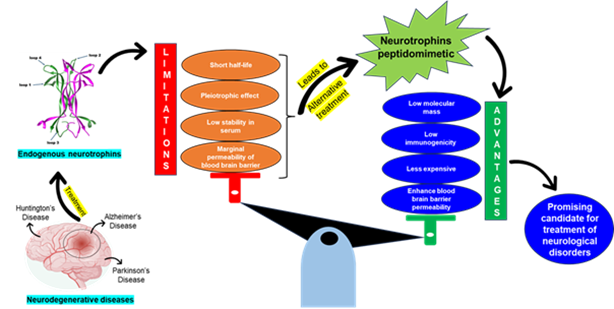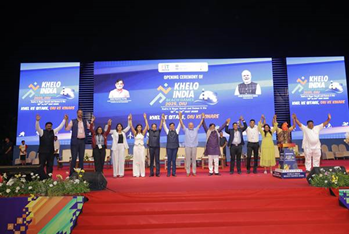TOPIC-1: STITCHED SHIP
GS-1 and 2: Indian Heritage & Culture and Governance
The context:
The Indian Navy has inducted and unveil the name of the Ancient Stitched Ship on 21st May 2025 at Naval Base, Karwar.
Indian Navy to Induct Traditionally Built ‘Ancient Stitched Ship’:
-
- The stitched ship is a recreation of a 5th century CE vessel, inspired by a painting from the Ajanta Caves.
- The project was initiated through a tripartite agreement signed in July 2023 between the Ministry of Culture, Indian Navy, and M/s Hodi Innovations, with funding from the Ministry of Culture.
- The keel of the ship was laid on 12 September 2023.
- The project is set to cost Rs 9 crore and is expected to take around 22 months to complete and will be in synergy with the Ministry of Culture’s Project Mausam.
- The ministries of Shipping and External Affairs will be supporting the project in its execution stage.
- The stitching work will be undertaken by a team of traditional shipwrights led by Babu Sankaran, considered an expert in the stitched ship technique.
- The ship was constructed using traditional methods and raw materials by artisans from Kerala, led by master shipwright, involving thousands of hand-stitched joints.
- The ship was launched in February 2025 at M/s Hodi Shipyard, Goa.
- The Indian Navy oversaw all aspects of the project, including concept development, design, technical validation, and construction.
- The design faced challenges due to the absence of surviving blueprints or physical remains, relying on artistic extrapolation from Ajanta cave paintings.
- The project combined archaeological interpretation, naval architecture, hydrodynamic testing, and traditional craftsmanship.
- The ship is unique with stitched hulls, square sails, steering oars, and wooden spars, unlike any modern vessel.
- IIT Madras collaborated in hydrodynamic testing to validate the ship’s sea behaviour, while the Navy undertook in-house structural analysis.
- The design aimed to maintain historical authenticity while ensuring seaworthiness.
- The ship reflects India’s ancient maritime traditions and innovation in reviving heritage shipbuilding.
- The project affirms India’s shipbuilding legacy and the Navy’s role in preserving India’s maritime heritage.
What is the ‘Stitched Ship’ Technique?
-
- This age-old technique involves shaping the wooden planks using the traditional steaming method to conform to the shape of the hull.
- Each plank will then be stitched to another using cords/ ropes, sealed with a combination of coconut fibre, resin, and fish oil – similar to the ancient Indian shipbuilding practice.
- The ancient stitching technique almost became extinct after the Britishers came to India, where the wooden planks were attached to support the recoil of canons.
- Sewn boat construction techniques were used prior to the development of metal fasteners and continued to be used for small boats to reduce construction costs where metal fasteners were too expensive.

Source: PIB
Topic- 2: Mizoram Becomes India’s First Fully Literate State Under ULLAS Scheme
GS- 3: Economy
The context:
Mizoram’s Chief Minister officially declared itself a fully literate state on 20th May 2025.
-
- Mizoram is the first state in India to achieve full literacy.
- The announcement was made during a special function in Aizawl, attended by dignitaries Minister of State for Skill Development and Education.
- Mizoram attained statehood in 1987 and had a literacy rate of 91.33% as per the 2011 Census, ranking third in India.
- The ULLAS – Nav Bharat Saaksharta Karyakram (New India Literacy Programme) was implemented to educate the remaining non-literate population.
- A door-to-door survey in 2023 identified 3,026 non-literates, of whom 1,692 learners were engaged in learning activities.
- Mizoram crossed the full literacy mark, defined as above 95% literacy rate by the Ministry of Education.
- The PFLS survey for 2023-24 reported Mizoram’s literacy rate at 98.20%.
- The initiative was supported by 292 volunteer teachers including students, educators, and resource persons, reflecting strong community involvement based on the Mizo cultural value of Kartavya Bodh (sense of duty).
- The event at Mizoram University auditorium highlighted the collaborative efforts of the government and people to promote inclusive education and empowerment.
- ULLAS is a centrally sponsored scheme aligned with NEP 2020, running from 2022 to 2027, targeting adults aged 15 and above who missed formal schooling.
- ULLAS includes five components: Foundational Literacy and Numeracy, Critical Life Skills, Basic Education, Vocational Skills, and Continuing Education.
- The scheme is based on volunteerism and the spirit of Kartavya Bodh, aiming to make Bharat fully literate.
- Over 1.77 crore learners have appeared in the Foundational Literacy and Numeracy Assessment Test (FLNAT) nationwide under ULLAS.
- More than 2.37 crore learners and 40.84 lakh volunteer teachers are registered on the ULLAS mobile app.
- Ladakh became the first administrative unit to declare full literacy on 24 June 2024.
Source: PIB
Topic- 3: World Bee Day 2025
GS-3: Economy
The context:
On 21st May 2025, the Khadi and Village Industries Commission (KVIC) celebrated World Bee Day 2025 at its Central Office in Mumbai under the banner ‘Sweet Revolution Utsav’ with the theme “Bee inspired by nature to nourish us all.”
-
- The event was inaugurated by KVIC and attended by beekeepers, trainees, scientists, apiculturists, students, and experts from Maharashtra and beyond.
- On the events, highlighted the ecological and economic importance of bees, emphasizing their role in honey production, pollination, and environmental conservation.
- The vision of a ‘Sweet Revolution’ for transforming honey production into a source of livelihood and health prosperity, contributing to Atmanirbhar Bharat.
- Under the Honey Mission, KVIC has distributed over 2,29,409 bee boxes and colonies across India, producing around 20,000 metric tonnes of honey and generating Rs. 325 crore income for beekeepers.
- In FY 2024-25, honey exports associated with KVIC reached Rs. 25 crore.
- KVIC described the Honey Mission as a comprehensive livelihood model empowering rural youth, women, and farmers through employment, training, and marketing support.
- The Central Bee Research & Training Institute (CBRTI), Pune, established in 1962, has trained over 50,000 beekeepers in modern apiculture techniques and contributes to agricultural productivity and rural entrepreneurship.
- Scientists highlighted that bees are essential for pollinating about 75% of food crops; without them, 30% of food crops and 90% of wild plant species would be at risk.
- The event included cultural programs by children and virtual success stories from beneficiaries nationwide, making it a vibrant celebration of World Bee Day 2025.
Source: PIB
Topic- 4: World Hydrogen Summit 2025
GS-2: Polity & Constitution
The context:
On 21st May 2025, the Ministry of New & Renewable Energy, represented by Secretary participated in the World Hydrogen Summit 2025 in Rotterdam, highlighting India’s vision and capabilities in renewable energy and green hydrogen.
-
- India aims to become a global leader in green hydrogen, leveraging its strength in renewable energy, with over 223 GW of installed capacity including 108 GW solar and 51 GW wind.
- The government’s National Green Hydrogen Mission, launched in 2023 with USD 2.4 billion allocation, targets 5 million metric tonnes of green hydrogen production by 2030, aiming to reduce nearly 50 million tonnes of CO2 emissions annually, attract USD 100 billion in investments, and generate over 600,000 jobs.
- India has allocated production capacity of 862,000 tonnes per annum to 19 companies and 3,000 MW annual electrolyzer manufacturing capacity to 15 firms, with pilot projects underway in steel, mobility, and shipping sectors.
- The Green Hydrogen Certification Scheme has been launched, and policy measures such as exemption from environmental clearance and development of green hydrogen hubs at Kandla, Paradip, and Tuticorin ports support the industry.
- Fifteen states have announced supportive policies, but challenges like high production costs, lack of standards, and infrastructure remain.
- The Green Hydrogen Summit 2025 to visit India’s Pavilion during the next two days and interact with Indian industries to explore partnerships.
- The Secretary’s keynote address showcased that India’s vision to not only meet its domestic demand but also become a major global exporter of green hydrogen by 2030—contributing meaningfully to decarbonization action.

Source: PIB
Topic- 5: Neurodegenerative diseases (NDs)
GS-3: Science and Technology
The context:
Neurodegenerative diseases (NDs) pose a major global health challenge. Although neurotrophins—proteins essential for neuronal survival and function—have shown therapeutic promise, their clinical application is limited by their instability and rapid degradation in the body.
Key Highlights:
-
- Peptidomimetic drugs – or synthetic molecules that mimic the structure of natural proteins can be repurposed to provide an effective therapeutic strategy to treat neurodegenerative diseases (NDs) by promoting neuronal growth and survival.
- Neurodegenerative diseases (NDs) have been a major global health challenge. While neurotrophins, proteins crucial for neuronal survival and function, have shown promise as potential treatments, their instability and rapid degradation have hindered their therapeutic application.
- Neurotrophin peptidomimetics are developed to target specific biological functions and can be valuable tools in drug discovery, especially when natural peptides have limitations like poor oral bioavailability or susceptibility to degradation.
- One of the significant advantages of peptidomimetics is their improved stability and bioavailability compared to endogenous neurotrophins. This means they can be delivered more effectively to the brain and maintain their therapeutic activity for a longer duration. Additionally, peptidomimetics can be designed to be more specific to their target receptors, reducing the risk of side effects.
- A team of scientists at the Indian Association for the Cultivation of Science (IASST), an autonomous institute of the Department of Science and Technology (DST), has been exploring peptidomimetics, synthetic compounds designed to mimic neurotrophins, as a potential solution to these limitations.

Source: PIB
Topic- 6: The Khelo India Beach Games 2025: A New Sporting Wave in India
GS- 1: Indian Society
The context:
Prime Minister highlighted the ‘transformative force’ of sports and how the Khelo India Beach Games were a watershed moment in the sporting history of the nation. The choice of Diu as the venue of the Khelo India Beach Games was “fitting”. “An amalgamation of sun, sand and water, they enhance the physical challenge and at the same time, celebrate our coastal heritage,” and as waves lash the shores and athletes compete. India will script a new sporting chapter.
-
- The Beach Games, held under the ever-expanding Khelo India umbrella for the first time, were formally declared open by Union Minister of Youth Affairs and Sports.
- The Khelo India Beach Games have brought together more than 1,350 athletes from over 30 states and Union Territories.
- Six medal sports: Beach Soccer, Beach Volleyball, Sepak Takraw, Kabaddi, Pencak Silat, and Open Water Swimming.
- Two demonstration sports: Mallakhamb and Tug of War.
- Union Minister officially declared the Games open at Ghoghla Beach, emphasizing:
- KIBG is not a casual event but a step toward a “Beach Sports Revolution”.
- The event promotes sports as a pathway to employment and youth empowerment.
- The government’s commitment to building sports infrastructure, training, and athlete support to boost India’s global sporting stature.
- Beach sports like volleyball offer career opportunities beyond hobbyist participation.
- The opening ceremony showcased India’s diverse cultural heritage through traditional dance forms, attended by dignitaries including administrators and Lt Governors from various Union Territories.
- The Khelo India initiative continues to expand domestic sports competitions, reinforcing the government’s mission to make India a global host for international sporting events and nurture a fitness-conscious population.
- The Games symbolize the emergence of a sports culture as the “new normal” in India.
- The Beach Games, held under the ever-expanding Khelo India umbrella for the first time, were formally declared open by Union Minister of Youth Affairs and Sports.

Source: PIB
Spread the Word
